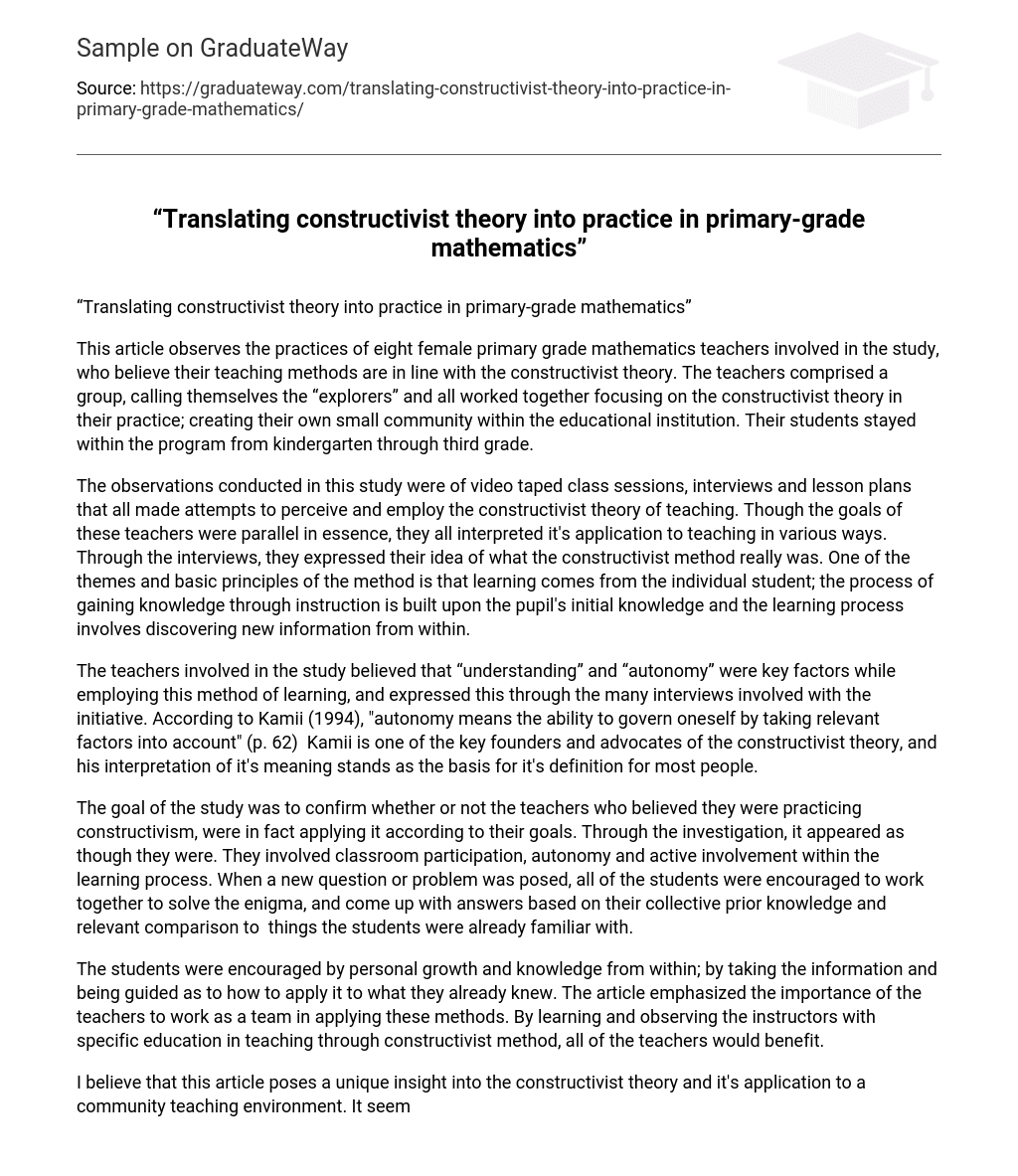This article observes the practices of eight female primary grade mathematics teachers involved in the study, who believe their teaching methods are in line with the constructivist theory. The teachers comprised a group, calling themselves the “explorers” and all worked together focusing on the constructivist theory in their practice; creating their own small community within the educational institution. Their students stayed within the program from kindergarten through third grade.
The observations conducted in this study were of video taped class sessions, interviews and lesson plans that all made attempts to perceive and employ the constructivist theory of teaching. Though the goals of these teachers were parallel in essence, they all interpreted it’s application to teaching in various ways. Through the interviews, they expressed their idea of what the constructivist method really was. One of the themes and basic principles of the method is that learning comes from the individual student; the process of gaining knowledge through instruction is built upon the pupil’s initial knowledge and the learning process involves discovering new information from within.
The teachers involved in the study believed that “understanding” and “autonomy” were key factors while employing this method of learning, and expressed this through the many interviews involved with the initiative. According to Kamii (1994), “autonomy means the ability to govern oneself by taking relevant factors into account” (p. 62) Kamii is one of the key founders and advocates of the constructivist theory, and his interpretation of it’s meaning stands as the basis for it’s definition for most people.
The goal of the study was to confirm whether or not the teachers who believed they were practicing constructivism, were in fact applying it according to their goals. Through the investigation, it appeared as though they were. They involved classroom participation, autonomy and active involvement within the learning process. When a new question or problem was posed, all of the students were encouraged to work together to solve the enigma, and come up with answers based on their collective prior knowledge and relevant comparison to things the students were already familiar with.
The students were encouraged by personal growth and knowledge from within; by taking the information and being guided as to how to apply it to what they already knew. The article emphasized the importance of the teachers to work as a team in applying these methods. By learning and observing the instructors with specific education in teaching through constructivist method, all of the teachers would benefit.
I believe that this article poses a unique insight into the constructivist theory and it’s application to a community teaching environment. It seems like common sense to assume that by taking new information and applying it to knowledge that the students already posses, they will retain it easier and more fluently. Most people learn better by practice than example, and that is what the constructivist method entertains as it’s most important factor.
Another important aspect of this method is the community involvement in both the classroom and the education’s administration. Encouraging the students to work together to solve problems will help them to see all the angles of a particular question. It will also assist in their fundamental learning process by forcing them to start from the beginning and work their way through the issue until a logical answer is achieved. The other aspect of community that this article emphasizes is the teacher’s relationship and collective teaching style. If the teachers focus on coinciding their teaching procedures, the students will spend less time trying to interpret the instructor’s ideas, and more time working on their own intellectual growth.
;





